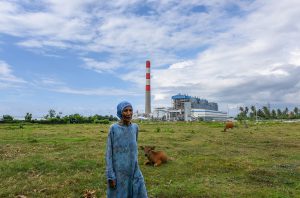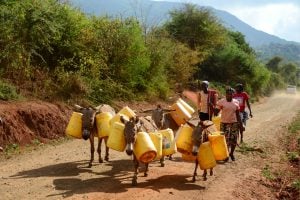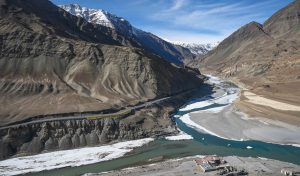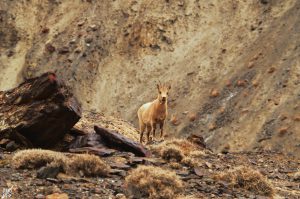It is not easy for a heavily-populated, resource-constrained country to balance its economic growth and global environmental commitments. Nevertheless Bangladesh has been committed to doing so since its independence in 1971 and has been showcasing that commitment time and time again.
It was visionary the government of the war-devastated Bangladesh in 1972 to become a state member of the world’s oldest and largest environmental conservation network – the International Union for Conservation of Nature (IUCN). Thirty-nine years later the government amended the Constitution of Bangladesh and made the “protection and improvement of environment and biodiversity” a state responsibility. Over the years, Bangladesh has been on the forefront of numerous environmental and climate actions. The distinction of the Prime Minister being recognised as one of the Champions of the Earth is a milestone in that journey.
Nevertheless it has not all been smooth sailing. Critical media reports over the last five years around the Sundarbans mangrove forest, a coal-fired power-plant, and the UNESCO World Heritage Committee (WHC) present an interesting case of balancing economic growth and complying with environmental responsibilities.
Sundarbans, UNESCO, power plant
The Sundarbans is the world largest mangrove forest shared between Bangladesh and India. Given its global importance, in 1997, Bangladesh Sundarbans (60% of the whole) was declared as a natural World Heritage Site by the UNESCO WHC, a decade after the Indian side had also been declared as such. Twenty years later it remains the only such site in Bangladesh, of the 213 across the world. It is, therefore, the highest profile commitment to Bangladesh’s protection of the environment.
In 2016 a Bangladesh-India owned company started building a 1,320-Megawatt coal-fuelled power-plant in the Rampal sub-district of the coastal district Bagerhat, which is 14 kilometres away from the boundary of the Sundarbans reserved forest and about 65 kilometres from the closet World Heritage Site in the south-east corner of the forest. Civil society platforms were alarmed long before the construction started and presented evidence how this venture might significantly harm the forests. The government of Bangladesh, however, repeatedly said the power-plant would not have any negative impacts on the mangrove ecosystem since advanced technologies would be used to avoid such impacts.
In March 2016, the UNESCO WHC and IUCN conducted a joint reactive monitoring mission to the Sundarbans World Heritage Site to assess its state. The mission made some important recommendations, including to relocate Rampal power-plant elsewhere, to undertake a strategic environmental assessment (SEA), to conduct ecological monitoring, and to perform proper environmental impact assessments of development interventions adjacent to this mangrove ecosystem. Many major suggestions were included in the decisions of the following WHC meeting in July 2017.
In the next couple of years, Bangladesh took some initiatives, submitted several reports, and updated its actions, which was praised in the follow up WHC meetings. The country, however, did not make sufficient progress on certain action points, which led the IUCN to recommend the UNESCO WHC in June 2019 to put the Sundarbans on the ‘List of World Heritage in Danger’. The Bangladeshi media was flooded with news that the WHC might accept that suggestion in the 43rd meeting in Baku, Azerbaijan in July 2019.
The final decisions (43 COM 7B.3) of the meeting, however, did not put the Sundarbans on the ‘In Danger’ list due to apparent non-agreement from some member countries. Bangladesh has been given till 1 February 2020 to submitted a report on the latest state of conservation of the Sundarbans and updates on the implementation of decisions made in the 43rd WHC meeting, which expects Bangladesh to comply with a number of guidelines and previous decisions of the WHC meetings and to update the Committee on a number of old and new issues. Based on that report, the UNESCO WHC will decide whether to put the Sundarbans on the ‘List of World Heritage in Danger’ or not.
Connecting the Silos
Until now the government of Bangladesh, the country’s civil society, and the UNESCO WHC have presented their cases based on their own observations, assessments, and research. A closer look into the research referred to by the civil society platform, the WHC-IUCN mission, the media, and the governments-owned power company, and those available on research portals show a desperate need for original scientific investigations on the anticipated impacts of Rampal power-plant on the environment and possible mitigation measures.
All parties are working in silos and analysing the same issues from their respective sectoral and political perspectives. But ‘breaking down the silos’ is not a feasible option here. It is now crucial for us to connect those silos, so that information and evidence is generated collectively and shared without restriction, and viable actions are taken based on them.
As a party to the World Heritage Convention for the last 36 years, Bangladesh now has five months to comply with the decisions taken in the last month’s WHC meeting or at least explain its position on the decisions. And that gives a rare opportunity for us to collaborate and start connecting the silos.
This can be done, if the following steps are followed.
- Regular ecological monitoring of the Sundarbans needs to be done to track the changes and prepare a report on the state of conservation of the site, an important compliance of the WHC. The Committee requested Bangladesh to develop an ecological monitoring programme as early as 2009. Many organizations, including government agencies, public and private research organizations and universities, have been collecting data on the Sundarbans for a very long time. It is high time to bring those experts together and establish a coordinated system to regularly collect, analyse, and compile data to prepare the ecological monitoring report every year.
- By the end of this year, Bangladesh is supposed to invite a joint mission of the WHC-IUCN. Relevant Bangladeshi scientists need to be part of this team and take part in the joint assessment. This approach was absent on the last mission that took place three years ago. That mission report, however, formed the basis of all WHC discussions since then.
- Since 2014 the WHC has been requesting Bangladesh to conduct a comprehensive strategic environmental assessment (SEA) of the region surrounding the Sundarbans. At the end of 2018, the process of selecting a consulting firm was initiated to do the SEA. We need to bring in native experts on the Sundarbans and environment to advise on the SEA design, to review initial findings, and to comment on the draft SEA report before its finalisation.
The case of the Sundarbans-Rampal power-plant shows how the development aspirations of a developing nation and its environmental commitments can create tensions in national and international arenas alike, causing storms in development discourses. Balancing these two is difficult, but not impossible when a government, like Bangladesh, is committed to conserving nature. The Sundarbans is Bangladesh’s, but it also belongs to the world. Global institutions therefore need to understand Bangladesh and engage in joint knowledge generation and co-production of solutions. Only working together can help us to dance in the storm.
![<p>The polluted rivers near the Sundarbans [image by: Pinaki Roy]</p>](https://dialogue.earth/content/uploads/2018/04/10926804_10153030142749282_9179181834106918434_o-Copy.jpg)







